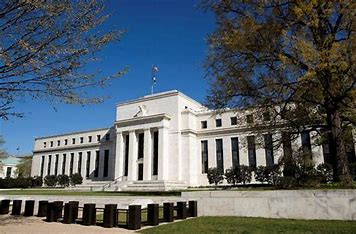The Federal Reserve disclosed on Tuesday that it recorded a net negative income of $114.3 billion in 2023, marking a historic loss primarily attributed to expenses associated with managing the US central bank’s short-term interest rate target.
This substantial loss contrasts sharply with the $58.8 billion in net income reported in 2022, according to the Fed’s audited financial statement released after preliminary figures earlier in the year. Despite the record loss, the Fed emphasized that negative net income does not hinder its ability to function or conduct monetary policy.
Per legislation, the Fed transfers any profits remaining after covering operational costs to the Treasury. Its revenue sources include income generated from services provided to the financial system and interest earnings from securities it holds. In recent years, the Fed has accrued substantial profits, buoyed by historically low interest rates and extensive bond holdings.
However, the Fed’s decision to significantly raise the federal funds rate beginning in the spring of 2022 has disrupted its financial landscape. This move, aimed at combating inflationary pressures, involved elevating the target rate from near-zero levels to the current range of 5.25% to 5.5%.
To maintain this target, the Fed incentivizes banks, money funds, and other financial institutions to deposit cash with the central bank, resulting in significantly higher interest payouts.
The audited financial statement revealed a substantial increase in interest expenses for banks’ reserve balances, amounting to $176.8 billion in 2023, compared to $116.4 billion in 2022. Similarly, interest payouts from the Fed’s reverse repo facility surged to $104.3 billion last year, up from $41.9 billion the previous year. Despite these mounting expenses, the income earned from bonds held by the Fed remained relatively stable at $163.8 billion in 2023.
The Fed has the authority to create money to cover its operational losses, utilizing an accounting mechanism known as a deferred asset. As of the end of 2023, the deferred asset totaled $133.3 billion, rising to $157.8 billion by March 20, with the potential for further growth.
Once the Fed returns to profitability, it will utilize excess earnings to reduce the deferred asset. Eventually, when the deferred asset is fully exhausted, the Fed will resume returning excess profits to the Treasury.
Although Fed officials have returned substantial sums to the Treasury in recent years, a report from the St. Louis Fed last year suggested that it may take considerable time before the Fed can once again contribute profits to the government.
